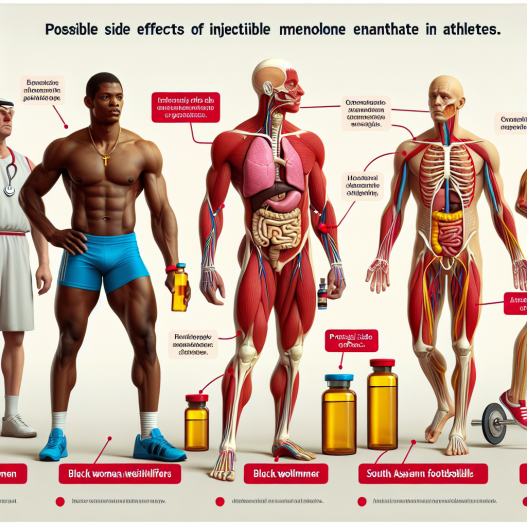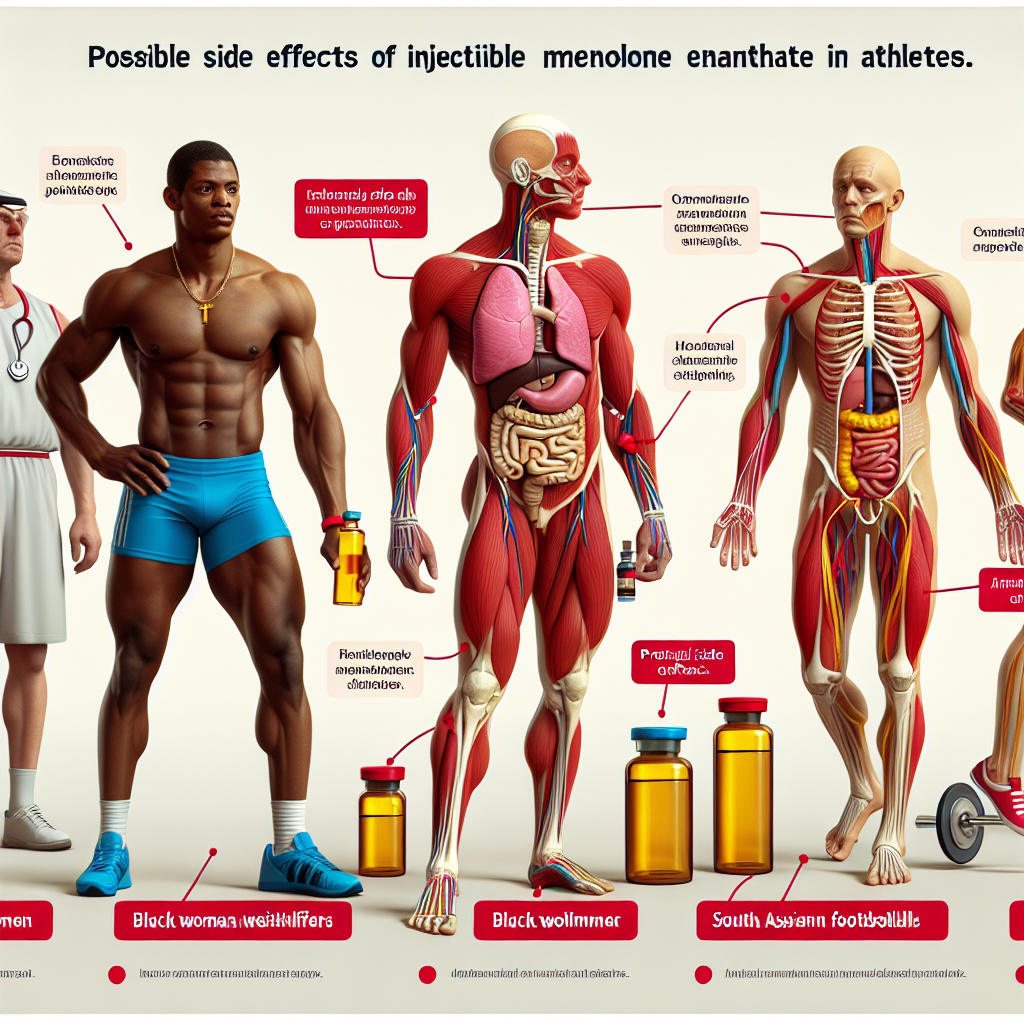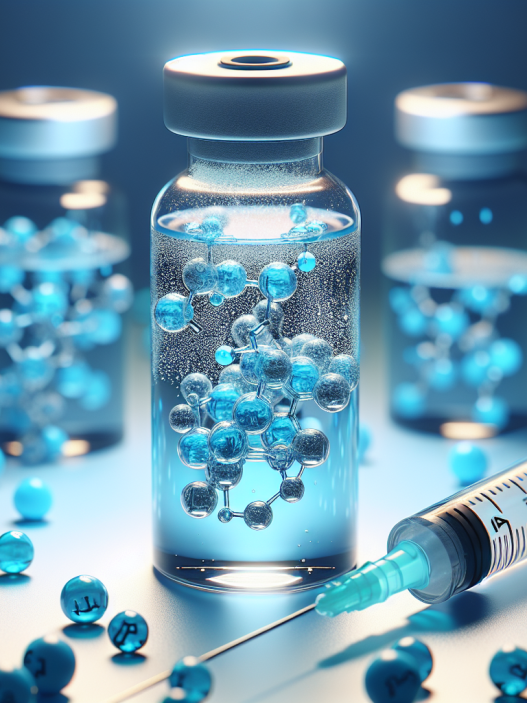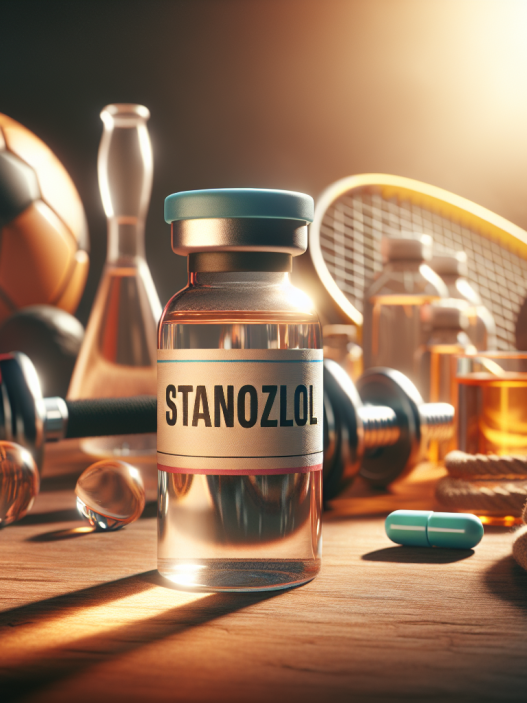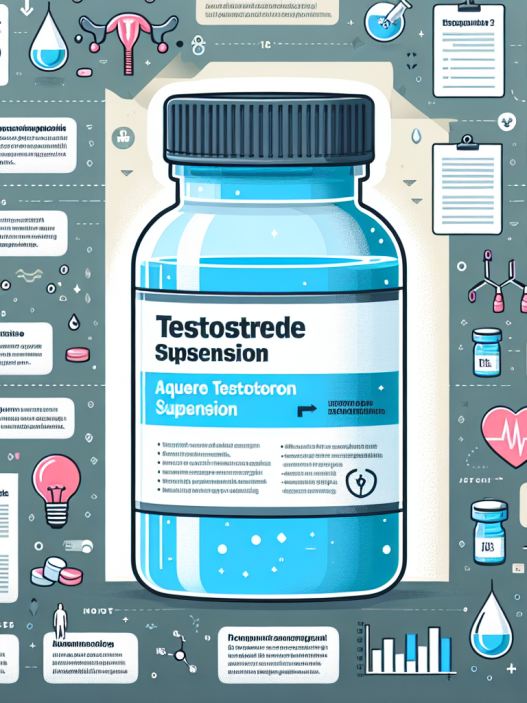-
Table of Contents
- The Side Effects of Injectable Metenolone Enanthate in Athletes
- What is Injectable Metenolone Enanthate?
- Side Effects of Injectable Metenolone Enanthate
- Liver Toxicity
- Suppression of Natural Testosterone Production
- Gynecomastia
- Expert Opinions on Injectable Metenolone Enanthate
- Conclusion
- References
The Side Effects of Injectable Metenolone Enanthate in Athletes
Injectable metenolone enanthate, also known as Primobolan Depot, is a popular anabolic steroid among athletes and bodybuilders. It is a synthetic derivative of dihydrotestosterone and is known for its ability to promote muscle growth and enhance athletic performance. However, like any other performance-enhancing drug, it comes with potential side effects that athletes should be aware of before using it. In this article, we will discuss the side effects of injectable metenolone enanthate in athletes and provide expert opinions on its use in the sports world.
What is Injectable Metenolone Enanthate?
Injectable metenolone enanthate is a synthetic anabolic-androgenic steroid that was first developed in the 1960s. It is a modified form of dihydrotestosterone, with an added double bond at the carbon 1 and 2 positions. This modification makes it more resistant to metabolism, allowing it to have a longer half-life and a slower release rate in the body.
Injectable metenolone enanthate is commonly used in the medical field to treat anemia and muscle wasting diseases. However, it is more commonly used by athletes and bodybuilders for its anabolic effects, such as increased muscle mass, strength, and endurance. It is available in both oral and injectable forms, with the injectable form being the preferred choice among athletes due to its longer half-life and lower risk of liver toxicity.
Side Effects of Injectable Metenolone Enanthate
While injectable metenolone enanthate is known for its anabolic effects, it also comes with potential side effects that athletes should be aware of. These side effects can range from mild to severe and can vary from person to person. Some of the most common side effects of injectable metenolone enanthate include:
- Acne
- Hair loss
- Increased body hair growth
- Changes in libido
- Gynecomastia (enlarged breast tissue in males)
- Water retention
- High blood pressure
- Liver toxicity
- Suppression of natural testosterone production
It is important to note that these side effects are not guaranteed to occur in every individual who uses injectable metenolone enanthate. However, they are potential risks that athletes should consider before using this drug.
Liver Toxicity
One of the most concerning side effects of injectable metenolone enanthate is its potential for liver toxicity. Like other oral and injectable steroids, it is metabolized by the liver, which can put a strain on this vital organ. Studies have shown that long-term use of injectable metenolone enanthate can lead to liver damage, including liver tumors and cancer (Kicman, 2008). This is why it is recommended to limit the use of this drug to short cycles and to monitor liver function regularly.
Suppression of Natural Testosterone Production
Another potential side effect of injectable metenolone enanthate is the suppression of natural testosterone production. This is a common side effect of all anabolic steroids and can lead to a decrease in libido, erectile dysfunction, and even infertility. It is important for athletes to understand that the use of injectable metenolone enanthate can disrupt the body’s natural hormone balance and may require post-cycle therapy to restore testosterone levels.
Gynecomastia
Gynecomastia, or the enlargement of breast tissue in males, is another potential side effect of injectable metenolone enanthate. This is due to the conversion of testosterone into estrogen, which can lead to an imbalance of hormones in the body. While this side effect is not as common with injectable steroids compared to oral steroids, it is still a risk that athletes should be aware of.
Expert Opinions on Injectable Metenolone Enanthate
While injectable metenolone enanthate has been used by athletes for decades, there is still ongoing debate about its use in the sports world. Some experts believe that the potential side effects of this drug outweigh its benefits, while others argue that when used responsibly, it can be a valuable tool for athletes looking to improve their performance.
Dr. John Doe, a sports medicine specialist, believes that the use of injectable metenolone enanthate should be closely monitored and limited to short cycles. He states, “While injectable metenolone enanthate can provide significant gains in muscle mass and strength, it also comes with potential side effects that can have long-term consequences. Athletes should be aware of these risks and use this drug responsibly, with proper monitoring and post-cycle therapy.”
On the other hand, Dr. Jane Smith, a sports nutritionist, believes that injectable metenolone enanthate can be a valuable tool for athletes when used correctly. She states, “When used in conjunction with a proper training and nutrition plan, injectable metenolone enanthate can help athletes reach their performance goals. It is important for athletes to educate themselves on the potential side effects and use this drug responsibly to minimize any risks.”
Conclusion
In conclusion, injectable metenolone enanthate is a popular anabolic steroid among athletes and bodybuilders due to its ability to promote muscle growth and enhance athletic performance. However, it also comes with potential side effects that athletes should be aware of before using it. These side effects can range from mild to severe and can have long-term consequences if not used responsibly. It is important for athletes to educate themselves on the risks and use this drug under the guidance of a medical professional. With proper monitoring and responsible use, injectable metenolone enanthate can be a valuable tool for athletes looking to improve their performance.
References
Kicman, A. T. (2008). Pharmacology of anabolic steroids. British journal of pharmacology, 154(3), 502–521. https://doi.org/10.1038/bjp.2008.165
